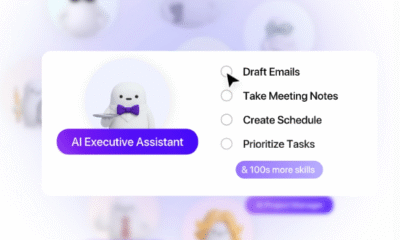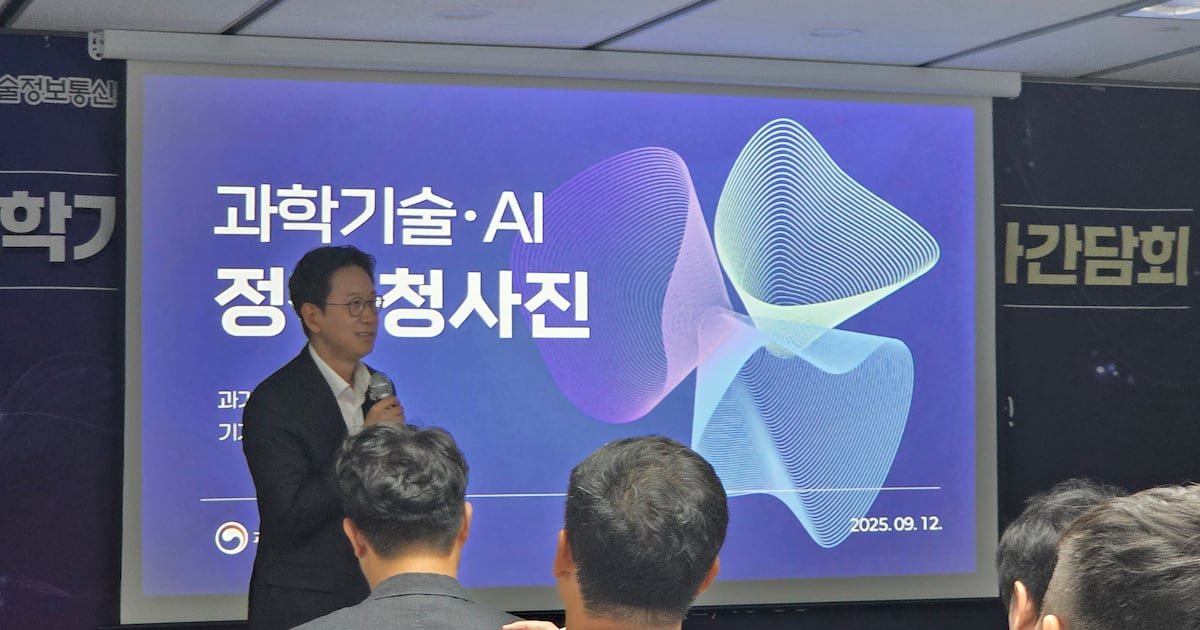Tools & Platforms
Cybersecurity challenges and AWS solutions in the AI era

As the technology world has grown more complicated through an explosion in artificial intelligence use cases, it has also led to challenges for cybersecurity professionals. Generative AI applications must be secured, the infrastructure around AI needs to be protected, and there is a constant worry about new threats driven by AI-powered tools.
AWS’ Rohan Karmarkar talks with theCUBEs John Furrier about cybersecurity.
For major cloud practitioners such as Amazon Web Services Inc., this reality requires close coordination with its partners to ensure that these factors are properly managed.
“We’re definitely seeing an increase in the velocity of attacks, so obviously security partners have to cater to that, AWS has to cater to that,” said Rohan Karmarkar (pictured), director of APO technology for AWS Partner SA. “These partners are making sure that they build capability to defend against AI-powered attacks and also build capability to make the security engineers and security operations center more productive, more automated. Those are the two things that we’re working with our partners on to build those capabilities using the secure foundation that we have.”
Karmarkar spoke with theCUBE’s John Furrier at the AWS Mid-Year Leadership Summit, during an exclusive broadcast on theCUBE, SiliconANGLE Media’s livestreaming studio. They discussed how partners are using AWS tools to mitigate threats and build a more secure environment.
Building cybersecurity on AWS
For partners, a key approach for managing security initiatives in the AI world is to build on the AWS platform. This includes leveraging many of the cloud provider’s intelligence tools, according to Karmarkar.
“PagerDuty, one of our key partners, uses Amazon Q Business, Amazon Bedrock and Amazon SageMaker to improve the incident response automation with AI,” Karmarkar said. “There are other partners like Trellix who has a Trellix-wide security assistant, which is built on Amazon Bedrock and SageMaker. Typically, security engineers get overwhelmed with these incidents, so bringing the right context and helping them analyze and getting them more productive is something that security partners are doing.”
Something else that security partners are doing is building agents. AWS is seeing its partners explore innovation in agentic AI to address a wide range of factors, including cost, accuracy and specialized domain management.
“There are a couple of partners like PantherAI and Securonix who have launched various agents that help in security engineering aspects, security operations,” Karmarkar said. “We are seeing a lot of agentic kinds of workflows and applications being built now. They’re starting with simple agents, but we are also seeing trends where agent-to-agent communication and multi-agent kinds of workflows are there.”
Adoption of AI agents and new ways to leverage autonomous technology for improving security have forced many AWS partners and customers to re-evaluate their applications. App modernization has become a key ingredient in building a secure IT environment.
“There’s a lot of conversation around app modernization,” Karmarkar explained. “We definitely are talking about application modernization because application and data modernization is the foundation to have a strong AI. How do we get apps to use the latest technologies, provide interfaces or databases to be vector enabled? It’s an interesting time to be in tech.”
Here’s the complete video interview, part of SiliconANGLE’s and theCUBE’s coverage of the AWS Mid-Year Leadership Summit:
Photo: SiliconANGLE
Support our open free content by sharing and engaging with our content and community.
Join theCUBE Alumni Trust Network
Where Technology Leaders Connect, Share Intelligence & Create Opportunities
11.4k+
CUBE Alumni Network
C-level and Technical
Domain Experts
Connect with 11,413+ industry leaders from our network of tech and business leaders forming a unique trusted network effect.
SiliconANGLE Media is a recognized leader in digital media innovation serving innovative audiences and brands, bringing together cutting-edge technology, influential content, strategic insights and real-time audience engagement. As the parent company of SiliconANGLE, theCUBE Network, theCUBE Research, CUBE365, theCUBE AI and theCUBE SuperStudios — such as those established in Silicon Valley and the New York Stock Exchange (NYSE) — SiliconANGLE Media operates at the intersection of media, technology, and AI. .
Founded by tech visionaries John Furrier and Dave Vellante, SiliconANGLE Media has built a powerful ecosystem of industry-leading digital media brands, with a reach of 15+ million elite tech professionals. The company’s new, proprietary theCUBE AI Video cloud is breaking ground in audience interaction, leveraging theCUBEai.com neural network to help technology companies make data-driven decisions and stay at the forefront of industry conversations.
Tools & Platforms
Bae Kyung-hun vows to cut AI gap with US to 0.5 years and boost Korea growth – CHOSUNBIZ – Chosun Biz
Tools & Platforms
AI Promptly Hired Announces Revolutionary AI Staffing Model

AI Promptly Hired unveils a subscription-based model that delivers top AI and machine learning talent to businesses in 72 hours or less.
— Transforming Staffing for the AI Era
Ava C. Ivy, the founder and CEO of AI Promptly Hired, has turned decades of leadership experience into a disruptive force in the world of staffing. With more than 30 years in human resources, including distinguished service in the U.S. military, Ivy’s journey to entrepreneurship was driven by a vision to bridge the talent gap in the rapidly evolving field of artificial intelligence (AI) and machine learning (ML). By launching AI Promptly Hired, Ivy is challenging traditional recruitment practices and positioning her company at the intersection of human potential and cutting-edge technology.
The Shift to AI: Why Speed and Precision Matter
AI Promptly Hired operates on a subscription-based model that offers businesses, startups, and scaling companies access to top-tier AI and machine learning professionals in as little as 72 hours. This approach stands in stark contrast to traditional staffing models, where roles can take weeks or even months to fill. Ivy’s company is dedicated to speed, precision, and flexibility, ensuring that clients do not miss out on the opportunity to leverage highly qualified talent at the right moment.
“We’re not just offering staffing solutions—we’re empowering companies to innovate and scale faster,” said Ivy. “The future of work won’t wait, and neither should the companies trying to build it.”
A Vision Rooted in Leadership and Resilience
Ivy’s transition from military leadership to entrepreneurship wasn’t simply a career shift; it was a testament to her ability to adapt and innovate. After years of strategic leadership in the military and corporate sectors, she pivoted to founding AI Promptly Hired, bringing together her expertise in human resources with her forward-thinking vision for the future of AI.
“I’ve lived transformation—military service, corporate leadership, entrepreneurship. Reinvention isn’t just my story; it’s the foundation of my business,” she shared. Ivy’s background in human resources allows her to not only understand hiring but also to grasp the human element behind the technology that is transforming industries.
A Movement, Not Just a Staffing Firm
AI Promptly Hired’s business model is revolutionary. By focusing on high-demand AI and machine learning professionals, Ivy has positioned her firm to meet the technological needs of today’s businesses without the long waiting periods and inflated recruiting costs associated with traditional firms.
“Most firms take weeks or months to fill critical AI roles. At AI Promptly Hired, we do it in 72 hours or less,” said Ivy. With AI Promptly Hired’s agile model, organizations can swiftly secure the talent necessary to stay ahead of the competition in a tech-driven world.
A Published Author with a Vision for the Future
In addition to her leadership in staffing, Ivy is also an author. Her books, The AI Gold Rush: How Regular People Are Building Million-Dollar Apps in Their Pajamas and The Last Job on Earth (a speculative thriller about society’s uneasy surrender to artificial intelligence), highlight her deep engagement with the possibilities and challenges of an AI-powered future.
“I didn’t just start a staffing company—I built a bridge between human potential and the future of artificial intelligence,” Ivy explained. Her thought leadership extends beyond her company, aiming to inspire and challenge audiences to think critically about the changing nature of work and the role of AI in that transformation.
Recent Award Recognition: Best Veteran-Led Staffing Company of 2025
AI Promptly Hired has recently earned the prestigious recognition as the Best Veteran-Led Staffing Company in the U.S. of 2025. Awarded by Best of Best Review, this accolade underscores the company’s innovative approach, leadership, and unwavering commitment to providing top-tier AI/ML talent at unprecedented speeds.
Under Ava C. Ivy’s leadership, AI Promptly Hired has revolutionized the staffing industry by leveraging military discipline alongside cutting-edge technology. This distinction highlights the company’s unique ability to meet the rapidly growing demand for AI and machine learning professionals in record time—further establishing its role as a leader in the staffing sector.
Looking Toward the Future of Work
With AI Promptly Hired, Ivy is actively shaping the future of staffing, focusing on both client and talent needs. By offering fast, flexible, and affordable access to top talent, the company is transforming how businesses approach AI and machine learning recruitment. Ivy’s commitment to bridging human potential and AI-driven innovation ensures that companies will be better positioned to navigate an increasingly digital world.
About AI Promptly Hired LLC
AI Promptly Hired is a woman veteran-led staffing firm founded by Ava C. Ivy. The company’s subscription-based model matches companies with top-tier AI and machine learning talent in 72 hours or less, offering speed and precision that traditional recruiting methods cannot match. By focusing on high-demand roles in artificial intelligence and machine learning, AI Promptly Hired helps businesses scale faster and smarter. Ava Ivy, with over 30 years of experience in human resources and military leadership, has built the company on a foundation of trust, agility, and a vision for the future of work.
Media Contact:
Ava C. Ivy
Founder & CEO, AI Promptly Hired LLC
Email: info@aipromptlyhired.com
Website: AI Promptly Hired LLC
Facebook: AI Promptly Hired
Instagram: @aipromptlyhiredllc
LinkedIn: AI Promptly Hired on LinkedIn
Contact Info:
Name: Ava C. Ivy
Email: Send Email
Organization: AI Promptly Hired LLC
Website: https://aipromptlyhired.com/
Release ID: 89169702
In case of detection of errors, concerns, or irregularities in the content provided in this press release, or if there is a need for a press release takedown, we strongly encourage you to reach out promptly by contacting error@releasecontact.com (it is important to note that this email is the authorized channel for such matters, sending multiple emails to multiple addresses does not necessarily help expedite your request). Our efficient team will be at your disposal for immediate assistance within 8 hours – resolving identified issues diligently or guiding you through the removal process. We take great pride in delivering reliable and precise information to our valued readers.
Tools & Platforms
12 News – YouTube
-

 Business2 weeks ago
Business2 weeks agoThe Guardian view on Trump and the Fed: independence is no substitute for accountability | Editorial
-
Tools & Platforms1 month ago
Building Trust in Military AI Starts with Opening the Black Box – War on the Rocks
-

 Ethics & Policy2 months ago
Ethics & Policy2 months agoSDAIA Supports Saudi Arabia’s Leadership in Shaping Global AI Ethics, Policy, and Research – وكالة الأنباء السعودية
-

 Events & Conferences4 months ago
Events & Conferences4 months agoJourney to 1000 models: Scaling Instagram’s recommendation system
-

 Jobs & Careers2 months ago
Jobs & Careers2 months agoMumbai-based Perplexity Alternative Has 60k+ Users Without Funding
-

 Podcasts & Talks2 months ago
Podcasts & Talks2 months agoHappy 4th of July! 🎆 Made with Veo 3 in Gemini
-

 Education2 months ago
Education2 months agoMacron says UK and France have duty to tackle illegal migration ‘with humanity, solidarity and firmness’ – UK politics live | Politics
-

 Education2 months ago
Education2 months agoVEX Robotics launches AI-powered classroom robotics system
-

 Podcasts & Talks2 months ago
Podcasts & Talks2 months agoOpenAI 🤝 @teamganassi
-

 Funding & Business3 months ago
Funding & Business3 months agoKayak and Expedia race to build AI travel agents that turn social posts into itineraries























